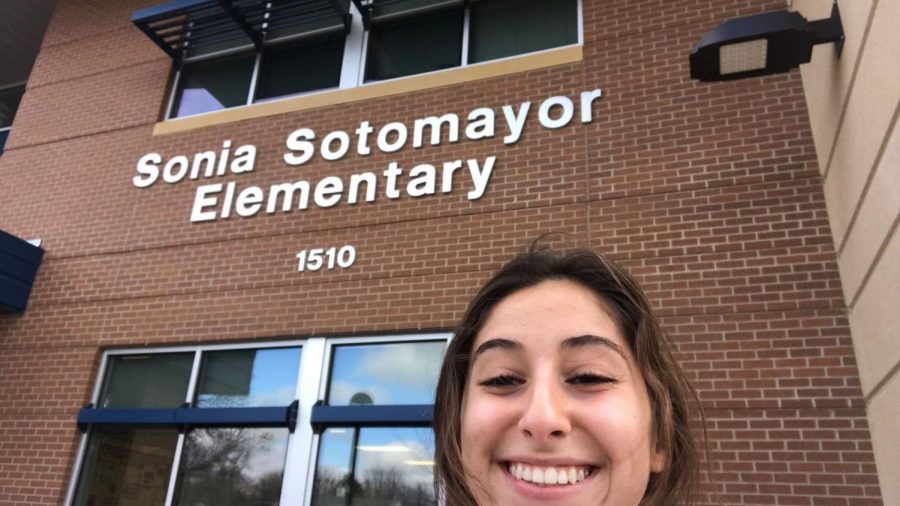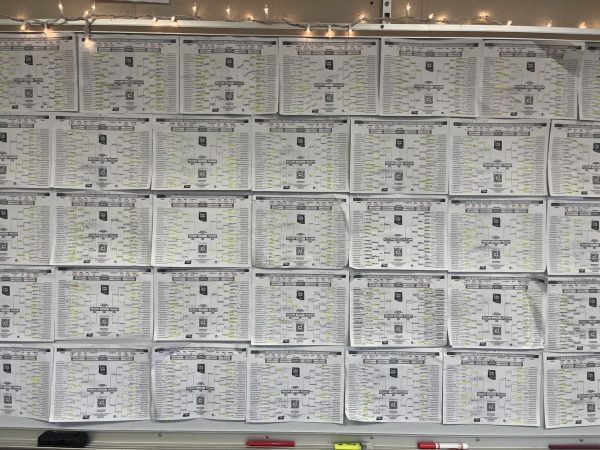Practicing Spanish outside of LHS
LHS junior and Spanish IV student Ana Simeonova also goes to Sonia Sotomayor twice a week to work with a third grade class of Spanish-speaking students.
March 6, 2020
Each year, many LHS students sign up to take a fourth, or sometimes even a fifth year of a foreign language. As one may expect, the more years of classes a student takes, the more difficult the lessons become. In the Spanish IV and AP Spanish classes at LHS, it is common for student-teacher communication to happen exclusively in Spanish.
However, spending 50 minutes a day, five days a week speaking, listening and writing in Spanish is simply not enough for some. For students hoping to one day become fluent in Spanish, more time must be dedicated outside of the classroom to work on their skills. As a result, a few LHS Spanish students have taken advantage of a unique opportunity in Sioux Falls: the Spanish Immersion Program. In the Spanish Immersion Program, students must join in kindergarten and continue on throughout their school years. Since it is an immersion school, teachers begin talking to their students in Spanish on the first day of kindergarten. By the end of their elementary school years, the students are fluent Spanish-speakers. Other students who were unable to or did not join have the opportunity to dedicate a class period each day to drive to Sonia Sotomayor Elementary School to work with the young, Spanish-speaking students.
LHS Senior Caroline Sudbeck, an AP Spanish student, goes to Sonia Sotomayor every single day during the school week for tutoring. Each of the tutors were assigned a specific group of students to work with, Sudbeck’s being a third grade class. Although Sudbeck’s day-to-day agenda at the elementary school is dependent upon the teacher’s lesson plans, she is still able to personally interact with the students every day.
“I mainly read Spanish books one-on-one with some students who might be struggling or just want some extra practice,” said Sudbeck. “I also practice sentence structure and letter sounds and pronunciations with a couple of students.”
Sudbeck is helping these elementary students learn subjects like math and grammar. What these kids may not realize is that when they speak to her in Spanish, they are teaching her just as much in return.
“The kids are not allowed to speak to me in English, and I only speak to them in Spanish,” said Sudbeck. “It can be really hard at times, but it’s helped my Spanish ear so much. I still have a long way to go, but I can definitely see how I’ve made some small subtle improvements already.”
To some students, spending an hour each day not speaking or hearing a single word in English may seem like a huge headache. However, Sudbeck is nothing but enthusiastic to further her understanding of her second language.
“I can honestly say that almost every day I’m introduced to at least one new word or phrase, and it’s pretty exciting because I know that even though it’s difficult sometimes, it’s making me better at communicating and teaching,” said Sudbeck. “Overall [the experience] already has given me a little bit more confidence when speaking and listening in Spanish.”







